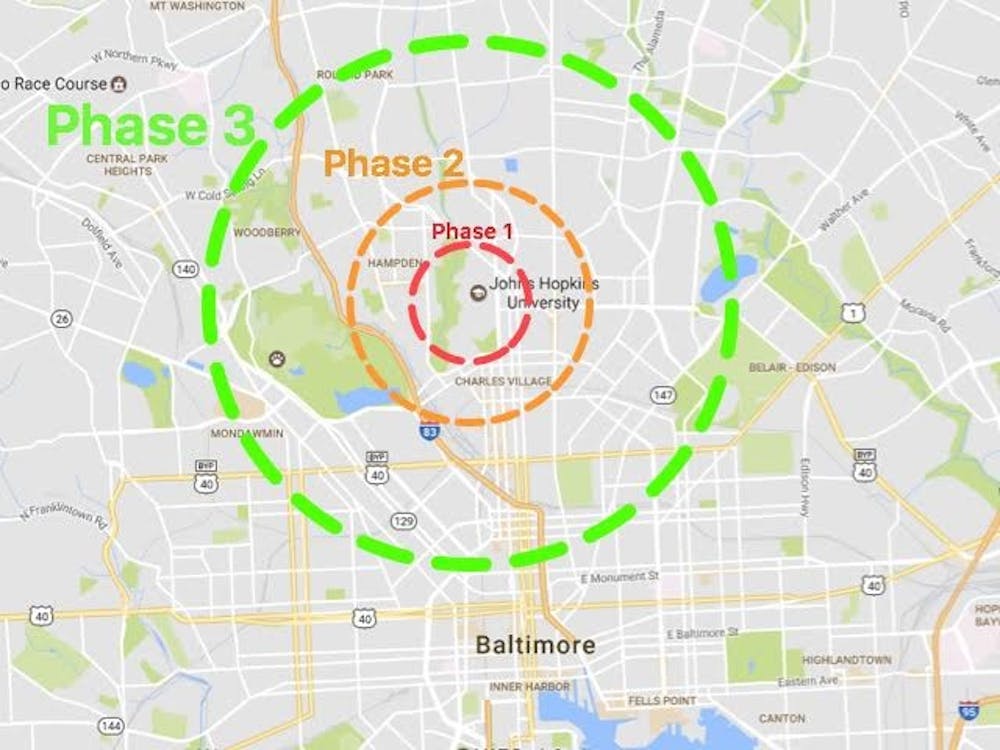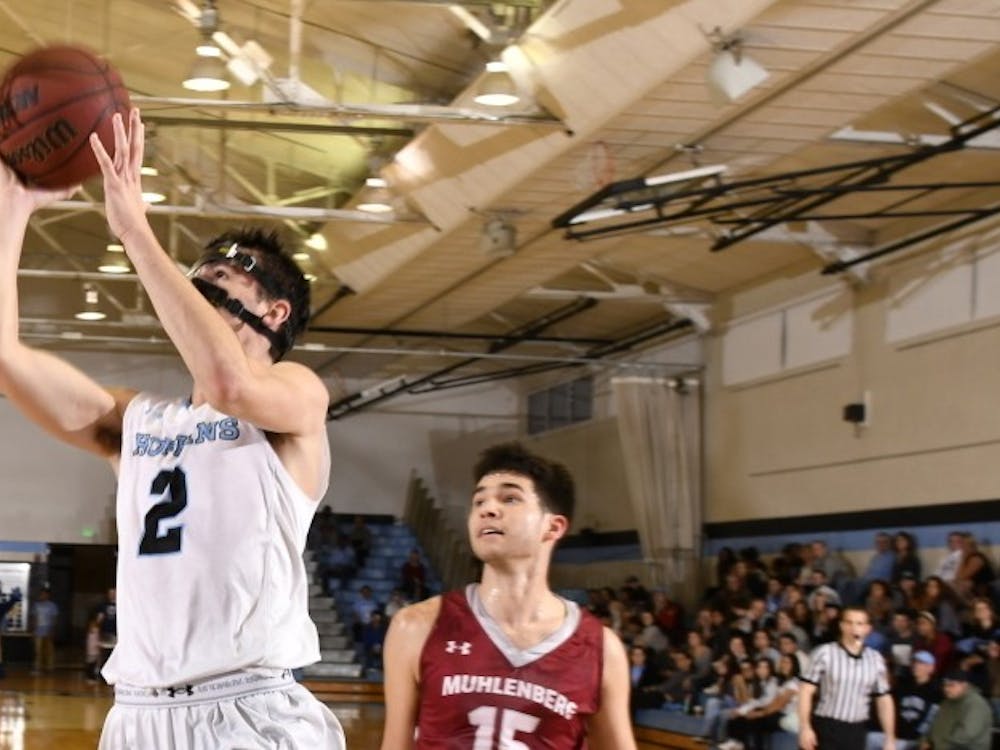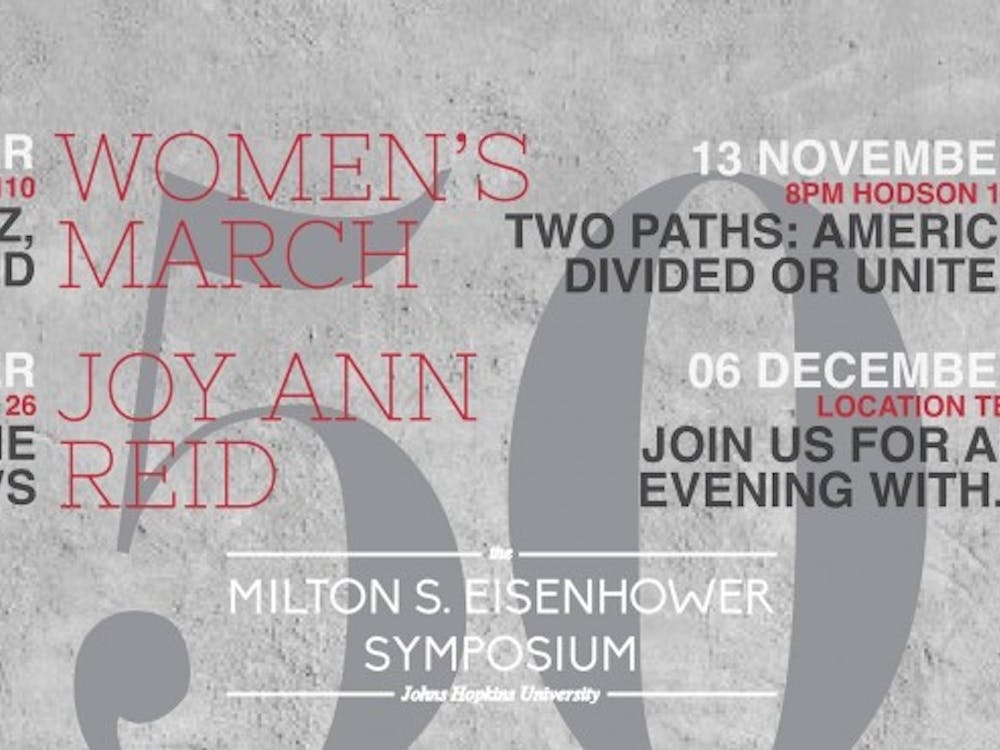APRIL FOOL'S: This article was published as part of The News-Letter's annual April Fool's edition, an attempt at adding some humor to a newspaper that is normally very serious about its reporting.
On Tuesday, the University announced plans to build a physical bubble around Homewood campus to protect students from the dangers of Baltimore. Construction is set to end in 2053.
University President Ronald J. Daniels announced this decision describing this bubble as a way to further engage the Baltimore Community.
“We want to build this bubble as a way to show our commitment to the city,” Daniels said. “We’re setting up a barrier between us and them, but at least we are transparent about it.”
Johns Hopkins Facilities and Real Estate (JHFRE) is in charge of building the bubble. They are consulting with the construction team behind President Trump’s border wall. Additionally, JHFRE is working with the Materials Science Department to create a research opportunity for students to develop a special bullet proof glass for the bubble.
The bubble is planned to be 100 feet tall, have a thickness of at least one foot and encircle the entire perimeter of the Homewood campus. Students can enter the bubble with their J-Card at designated entrances around campus but will not be able to leave once inside.
JHFRE stated in a press release that the construction planning was made possible through the support of famous Hopkins alumnus Ben Carson who is currently the U.S. Secretary of Housing and Urban Development. Following Carson’s suggestion, the preliminary name for the finished project is “Ben’s Big Bubble.”
“Well, what you see here is that Baltimore is unsafe, because there are so many freed slaves there,” Carson’s statement read. “With my gifted hands, I will be able to surgically remove Hopkins from the city like removing a tumor from a brain.”
Daniels stated that the University is also considering expanding the bubble to the neighborhoods around Hopkins.
“We have a lot of community partnership initiatives where we invest a lot of money to purge the local neighborhoods of their faults,” Daniels said. “Once those communities have achieved our institutional standards we will happily extend the construction of the bubble to include them.”
Executive Director of Campus Safety and Security Lee James has been heavily involved in the development of the bubble. He described how the University will build the bubble.
“We are going to build a bubble, and it’s going to be a very good bubble,” he said. “We’re going to build it very inexpensively. Baltimore will pay for the bubble.”
Lieutenant Stephen Moffett, the Crime Prevention and Event Security Coordinator, stated that the bubble is being built to keep students on campus, where they can be supervised.
“A lot of students aren’t from around here and might end up in situations off campus that they just can’t handle,” he said. “This bubble would protect students from incidents such as those.”
Students have expressed mixed reactions to the University’s announcement. Freshman Pippa Lee was indifferent to the bubble’s construction.
“I’ve never left campus so this bubble doesn’t affect me,” she said. “There’s nothing to really see in Baltimore so I don’t care that they’re building it.”
Sophomore Logan Bateman supported the University’s decision to increase safety measures.
“I’ve seen all the episodes of The Wire and I know what’s out there lurking in the city,” he said. “I’m glad that the University is being proactive and prioritizing student safety.”
However, other students, like junior Wilson White find the bubble troubling. As a Global Environmental Change and Sustainability (GECS) student, White believes that the bubble will cause harm to the environment.
“Do you know how many birds have crashed into that big window in Brody? Their skeletons are littered all around,” he said. “Imagine how many birds are going to die with a big-ass glass dome in the sky.”
Senior Hailey Jones believes the bubble is a symbol of the University’s oppression of women.
Specifically, she sees the bubble as a manifestation of the glass ceiling, the invisible barrier that prevents minorities and women from advancing.
“I already have to face glass ceilings in the classroom and workplace, and now I have to be confronted with a glass ceiling just by walking outside,” she said. “The patriarchy has really gotten out of hand.”
The University also announced that it is in the process of developing individual bubbles for students so that they don’t have to interact with one another while on campus.





